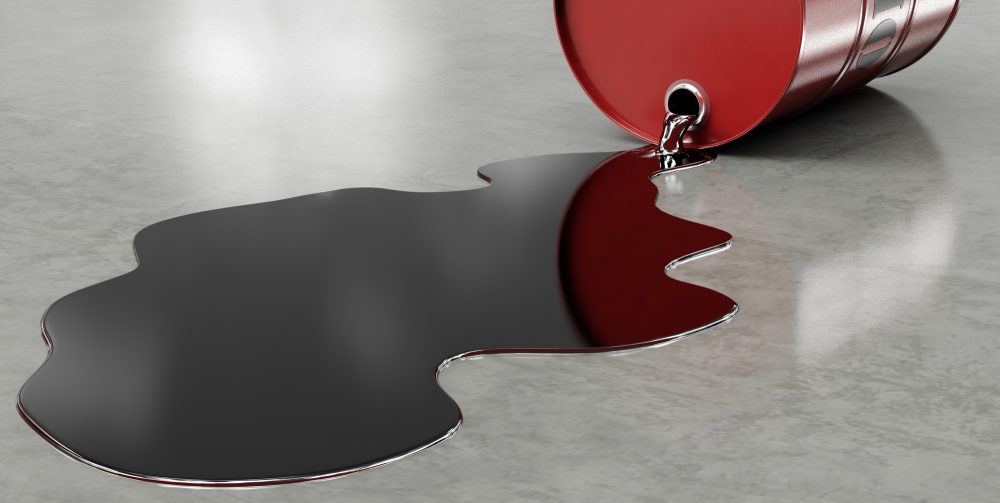Why Proper Spill Containment is Critical to Your Business

Proper Spill Containment
Proper Spill Containment – Why It’s Critical
If you run a business that handles petroleum products or potentially harmful chemicals, you need a plan to address proper spill containment. Period. No exceptions. In this article we spoke with Dean Moss, Subject Matter Expert and SCL Director of Safety and Compliance on the importance of having a proper spill containment plan in place and the appropriate steps you should take to ensure optimal safety while remaining in compliance with EPA regulations. According to Moss, “One of the main elements to the EPA’s regulatory plans is that they specifically relate to petroleum products. The way the EPA defines an ‘oil’ is if it forms a sheen on top of the water or creates a sludge at the bottom of a tank. It doesn’t matter how much there is, if it has a visible sheen, the EPA considers it oil.”
Oil Spill Prevention and Preparedness
The EPA was created to facilitate the prevention of and rapid response to oil spills that occur in around US waters, whether they be lakes, rivers, shorelines, the open ocean, aquifers etc. According to the EPA, oil and chemical spills are best responded to by following their two Spills Prevention and Preparedness Regulations:
- The Spill Prevention, Control, and Countermeasures rule (SPCC), specifically designed to assist facilities in the prevention of a discharge of oil from being released into “navigable waters or adjoining shorelines.”
- The Facility Response Plan (FRP) rule, requiring “certain facilities to submit a response plan and prepare to respond to a worst case oil discharge or threat of a discharge.”
Spill Prevention, Control and Countermeasures
Published first in 1973 under the Clean Water Act, the SPCC Oil Pollution Prevention regulation created guidelines for “the prevention of, preparedness for, and response to oil discharges at specific non-transportation-related facilities.” The intention of the regulation is to at all cost, “prevent oil from reaching navigable waters and adjoining shorelines, and to contain discharges of oil.” Says Moss, “The SPCC is what you want to have in place for your facility in the same way you want to have an earthquake evacuation plan in place. It’s essential.”
SPCC Requirements
The requirements needed to qualify for an SPCC plan include either:
- Total above ground oil storage of 1,320 gallons (or)
- Below ground oil storage of 42,000 gallons
The Inevitability of a Spill
According to Moss, “It’s inevitable that while working with these products, you are eventually going to have a spill, but by having a proper spill containment plan in place, you can maintain the spill with secondary containment, preventing it from entering storm drains. When it rains, water heads to the gutter and then to the storm drain, eventually finding its way into larger waterways, which can cause significant damage to the environment. You want to stop all spills from reaching the storm drain in any way that you can, and having a solid SPCC plan in place is the best way to do that.”
Why Would Someone Not Have an SPCC Plan?
“Laziness,” says Moss, “And not wanting to spend the money. There’s a hefty cost associated with being in compliance. An environmental firm needs to come out and do an assessment, which costs money, and some organizations just push these precautionary measures to the back burner, hoping for the best. But despite the cost of assessments and developing an SPCC plan, the investment to remain compliant is far less than the fines you’ll incur if you don’t have one in place and have a spill.” Fines for SPCC non-compliance are severe depending on the magnitude of the violation. Once the EPA is involved, fines increase significantly and can reach up to $27,500 per violation per day.
Says Moss, “If you weren’t aware that you needed an SPCC, or if you are aware but don’t currently have one, you need to get on it immediately.” Your SPCC does not require you to have an engineer perform an assessment every 5 years unless something changes at your facility. Amendments must be done within 6 months of a change, and where companies begin to get into trouble is when they don’t actively amend their assessment. According to Moss, “If you’re storing X amount of oil at your facility but did not present that inventory at your environmental assessment and then you have a spill that leads to oil entering the street and storm drain, you will soon have the EPA knocking at your door, and that’s where the fines start coming in.”
How Do You Implement an SPCC?
To ensure that your facility is in compliance, contact an environmental agency, contractor or engineer to perform a facility assessment. They will review your inventory, making sure that the appropriate containment is in place for specific products and will check your Best Management Practices (BMPs) and will inquire as to whether you have a spill kit in case of an emergency – an overnight solution that can prevent a disaster such as free flowing oil headed to the street and storm drains. Containment solutions such as berms surrounding tanks, totes acting as speed bumps to slow or stop runoff, and grate/reservoir systems to capture surface water are all potential options for an effective SPCC plan. The size of your drums, totes and tanks will determine how large and what kind of secondary containment your facility will require.
SCL as a Resource
Another option prior to calling an environmental agency is to contact SCL to speak with Moss – Subject Matter Expert and the SCL Director of Safety and Compliance. He’ll be happy to offer suggestions on what regulations specifically pertain to your facility and what proper spill containment solutions will best suite your needs. As a solutions and logistic provider, SCL is committed to supporting your business in staying compliant with EPA regulations on proper spill containment, protecting the safety of your team and your most valuable assets.
Contact an SCL Consultant Today
In a wide range of industrial sectors, if there’s metal touching metal, oil is involved. At SCL, we’re here to protect and optimize the machines that keep our country moving and we pride ourselves on providing superior logistics and solutions, extensive product and industry knowledge and total performance satisfaction for our customers. For information on how we can assist your fleet in choosing the optimal products at a competitive price, contact an SCL consultant today.
